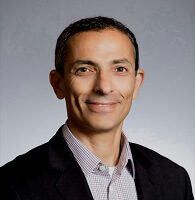The primary mission of higher education institutions is to deliver quality education to students; yet, they face the challenge of balancing between a highly secure facility and one that supports open interaction.
“Educational institutions face an increasing and constantly evolving risk environment. Recent high-profile incidents emphasize these risks and magnify the vulnerabilities that educational facilities face. This has led to more public demand for improved security solutions across campuses,” said Brandon Reich, Business Leader for Video Surveillance at
Pivot3.
Jumbi Edulbehram, Regional President of the Americas at
Oncam, explained, “Over the last decade, educational facilities all over the world have evolved into what we call ‘soft targets’ for those who wish to do great harm, such as active shooters or vandals. As a result, more robust and comprehensive security technology is being implemented and best practices/procedures are being developed by various stakeholders to be followed in the event of an emergency.”
In the face of growing security concerns, post-secondary institutions are rapidly adopting and upgrading their security solutions. Although security and safety may not be the first thing students and parents consider when choosing a school, it is becoming an influencing factor. “Parents are increasingly more aware of how schools address safety concerns and are doing their research in an effort to keep their children safe,” said Edulbehram.
University security operators are also starting to take cues from the law enforcement community, according to Reich, by “exploring new applications for body-worn cameras, opportunities for public-private partnerships and sharing video with first responders.”
 Jumbi Edulbehram,
Jumbi Edulbehram,
Regional President, Americas,
Oncam
Tackling budgets and open campus environments
Universities present the challenge of securing an open environment with multiple buildings often spread across an expansive area. Balancing what universities want in a security system with what they need thus becomes a challenge.
“With an expectation of open campuses that foster collaborative learning, addressing visitor management and identity authentication is becoming a critical component of safety efforts. Addressing this often involves integrating several layers of visitor management, access control and student management systems,” said Julie Brown, Institutional Market Leader for North American Building Solutions at
Johnson Controls. “Tools such as advanced turnstiles, facial recognition and biometric authentication can help maintain a feel of openness while controlling the flow of traffic and protecting access to unauthorized areas.”
When it comes to budget, cost is an all too familiar hurdle. “Universities are very well known for squeezing every last drop of ROI from a system they probably paid a lot for, some 10, 15 or even 20 years ago. Once a city or university invests, they rely on keeping that system running as long as possible,” said Terry Schulenburg, Business Development Manager for Education at
Genetec. “With safety products, colleges have been patching and keeping these systems running for years. But, when an event occurs and things don’t work out well, that is when it’s time to update. It is easier to find money after a failure, than preventive maintenance budgeting.”
 James Marcella,
James Marcella,
Director, Industry Associations,
Axis Communications
However, investment in the right technologies could reduce the strain on university budgets. “By making use of video analytics and smart access control solutions, for example, educators can reduce the workload associated with keeping the campus secure thereby reducing labor costs,” said James Marcella, Director of Industry Associations at
Axis Communications.
“Similarly, investing in future-proofed, high-quality technologies that can adapt and evolve over time to address new challenges will reduce a security system’s total cost of ownership. The key challenge is getting universities to look beyond the initial outlay, and plan for reducing costs over the medium-to-long-term.”
Rapid student turnover is another challenge. “Imagine, among hundreds of students living at the halls, just a handful leave or arrive each semester. That’s a couple of manual key handovers to schedule every week, and to chase if a key-holder fails to appear. If keys are not handed in, is a room secure for its next occupant? And how can you know if one has been copied?” asked Thomas Schulz, Marketing and Communications Director for Digital and Access Solutions at
ASSA ABLOY EMEA. Wireless access control systems could address these issues and provide the flexibility that mechanical locks lack.
 Thomas Schulz,
Thomas Schulz,
Marketing and Communications Director,
Digital and Access Solutions,
ASSA ABLOY EMEA
How campus security demands differ by region
From how crimes are reported to needing to track student attendance, regulations around the globe help dictate certain campus security requirements.
Regional demands for campus security solutions are partly driven by laws and regulations. What universities are required to have in the U.S. may not hold true in the U.K. or elsewhere in the world.
Edulbehram explained, “In the United States, the Clery Act requires all colleges and universities that participate in federal financial aid programs to keep and disclose information about crime on and near their respective campuses. The report also includes policy statements regarding various safety and security measures, campus crime prevention program descriptions and procedures to be followed in the investigation and prosecution of alleged sex offenses.”
The upcoming General Data Protection Regulation (GDPR), which takes effect in May of this year, will also impact university campuses and their security, according to Marcella. “The new legislation…attempts to put very strict rules on the collection of personal, private information under which a person’s identity falls. As such, university campuses in the EU must approach security with less focus on video surveillance and more on emergency call systems and access control.”
Schulenburg pointed to the difference in attendance tracking between US and European universities. “In the U.S. because the students are spending their money, the schools leave it up to the student to make sure they are attending classes and are performing their best. In Europe, students are required to be present at 80 percent of their classes. Should they choose not to attend, they no longer have the option to continue as a student. Many European education institutions now automatically track attendance for their classes via door readers managed by access control software,” Schulenburg explained.